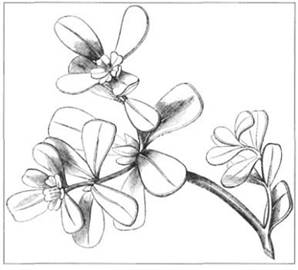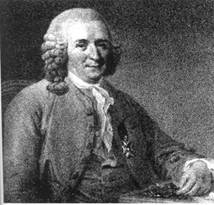


 النبات
النبات
 الحيوان
الحيوان
 الأحياء المجهرية
الأحياء المجهرية
 علم الأمراض
علم الأمراض
 التقانة الإحيائية
التقانة الإحيائية
 التقنية الحيوية المكروبية
التقنية الحيوية المكروبية
 التقنية الحياتية النانوية
التقنية الحياتية النانوية
 علم الأجنة
علم الأجنة
 الأحياء الجزيئي
الأحياء الجزيئي
 علم وظائف الأعضاء
علم وظائف الأعضاء
 الغدد
الغدد
 المضادات الحيوية
المضادات الحيوية|
Read More
Date: 15-11-2016
Date: 2-11-2016
Date: 2-11-2015
|
Historical Aspects of Plant Classification
THE ANCIENT PERIOD
Although early classifications of plants were prepared in ancient China and the Aztec Empire of Mexico and Central America, our modern treatments have their origins in ancient Greece. Theophrastus, a student of both Plato and Aristotle, wrote extensively about plants around 300 B.C. and established many important concepts. He distinguished flowering and nonflowering plants, recognized sexuality in plants, and understood that fruits develop from carpels. Theophrastus described almost 500 species, and our genus names Asparagus, Narcissus, and Daucus (carrot) can be traced directly back to him.
Pliny the Elder (Caius Plinius Secundus; A.D. 23-79), a Roman lawyer and natural historian, wrote voluminously on almost every subject. His largest work, Natural History, was an attempt to describe everything in the world. Despite its inclusion of many fanciful creatures based only on folktales, it served as the definitive, authoritative source of information on most subjects for more than 1000 years.
The most important book on plant classification from the ancient world is Materia Medica by Dioscorides. Written in the first century A.D., it describes 600 plant species and how they can be used to treat disease. It was the best, often the only, source of information about preparing herbal medicines. Materia Medica was at last superseded by more accurate work during the Renaissance, but it is still published today for its immense historical value as a direct link to early Greek science.
THE RENAISSANCE PERIOD
Between the time of Dioscorides and the Renaissance, almost no works of great value in natural history were written. However, changes began to occur in the 15th century, and Europe entered an age of exploration. Prince Henry the Navigator sent ships on expeditions down the west coast of Africa, and the explorers returned with new plants and animals and knowledge of new lands and peoples. Simultaneously, exploration of physics, chemistry, astronomy, and geology began. An important result of these explorations was the discovery that Pliny and other ancient authorities had been wrong in many subjects. Until then people accepted the idea that the ancient Greeks and Romans had represented a Golden Age and were basically infallible; any observation that contradicted Pliny was assumed to be an error on the part of the observer. The realization that the ancients were indeed fallible meant that the answers to questions about the world had to be sought in the world itself, not in ancient books. Exploration—not only geographical but also scientific, philosophical, and religious exploration—became an obsession.
In botany, this new, independent thinking first became apparent in the publication of medical])' oriented plant books, called herbals, which were published in large numbers. By the middle of the 16th century, they began to contain extremely careful, precise descriptions of plants based on first-hand observation of the plants, not by paraphrasing Materia Medica (Fig. 1). Most herbals contained fewer than 1000 plants, so a reasonably good botanist could become familiar with all of them.

FIGURE 1:Herbals prepared during the Renaissance relied on direct observation of plants. Illustrations such as this drawing of pusla (Portulaca oleracea) were rendered more carefully and accurately then they had been previously. (Culver Pictures, Inc.)
However, as exploration continued, especially after the discovery of the Americas, the number of plant species became too large for this type of familiar treatment. Rather than listing or describing all the plants of the known world, it was necessary to develop a classification system, so that a person would have some means of identifying an unfamiliar specimen and finding it in the ever-larger herbals.
Several important ideas developed at this time. One was the concept of a genus as a group of similar species, established by Gaspard Bauhin (1560-1624). Although this may seem like an obvious notion, it was a profound breakthrough at the time. The concept of species had been easy: God was believed to have created all the types of organisms—the species. But this concept did not explain why there should be groupings of species, as the concept of genus implies. Why would God create several types of roses, several types of minis? This was not a trivial question then. Until the theory of evolution by natural selection. the world was viewed as a reflection of the mind of God, who presumably had created it. If there were thousands of species of grasses but only three of cattails, this would reveal something about how God thinks. The ancient Greeks were of no help. Their philosophy was based on the concept of idealism: All reality—plants, animals, humans— are merely imperfect physical manifestations of ideal, theoretical types. They did not group the types into anything equivalent to genera. Yet it was obvious to anyone familiar with the increasing number of plant and animal species that some species resembled each other very closely.
The classification system, particularly scientific names, can be traced directly to Caro- ---s Linnaeus, a professor of natural history at the University of Uppsala in Sweden during the middle and latter part of the 18th century (Fig. 2). Of major significance was the fact that he was the primary professor for 180 students, many of whom became excellent botanists and large numbers of whom traveled widely. Not only did they send specimens to Linnaeus from all over the world, but they also transmitted his ideas to the people they waked with, and vice versa.

FIGURE 2:Carolus Linnaeus (1707-1778) developed the binomial system of nomenclature in which each species has both a genus name and a species epithet. (Biophoto Associates, National Portrait Gallery, London)
The number of species known to exist by the time of Linnaeus was too great for any single person to be familiar with even half of them. An efficient system of classification and nomenclature was desperately needed, and Linnaeus supplied it. He adopted the genus system of Bauhin and standardized it. He created a large numbers of genera and placed every species into one genus or another. Every species had both a genus name and a species name, the basis of our present binomial system of nomenclature. Linnaeus's system was ay to use; he decided early that the numbers of stamens and carpels were the most important features of a species, so his classification was based on that. He created class Monandria for species with one stamen, and it was divided into two subclasses, Monogynia (one carpel) and Digynia (two carpels). Other classes were Diandria, Triandria, and so on. The system was expandable, so that as new species were discovered, they could easily be fitted in. This system was entirely artificial: The fact that plants share the same number of stamens does not mean that they resemble each other in more fundamental, important ways. Few botanists shared Linnaeus's conviction that the numbers of stamens and carpels were the most significant aspects of species. But there was no concept of a natural classification system at the time, more than a century and a half before the theory of evolution by natural selection was developed.
In 1753, Linnaeus published Species Plantarum, a treatment of all plant species known in the world at that time. This book made botanical studies of all types much easier, because specimens could be identified quickly. However, the system often placed obviously dissimilar species into the same genus.
THE MODERN PERIOD: EVOLUTION AND CLASSIFICATION
The idea of the evolution of species developed slowly over many years; it did not begin with Darwin and Wallace by any means. Bauhin recognized resemblance early, and an expansion of the idea of similarity occurred at the Jardin des Plantes in Paris. The administrators of the garden wanted to organize it in a logical way, so that plants resembling each other were planted together. Antoine-Laurent de Jussieu was given the task of organization; the result was the book Genera Plantarum (1789). The first major attempt at a natural system of classification had no theoretical or philosophical basis; science was still dominated by the idea of divinely created types, but it was impossible to ignore the various levels of similarity.
Unfortunately, J. B. P. de Lamarck at this time presented his theory of evolution by inheritance of acquired characteristics. Lamarck's theory was based on the incorrect idea that all cells of the body produced fluids that diffused to the genitalia, where the fluids were concentrated and formed into sperm cells or egg cells. As an individual changed, the secreted fluids and therefore the characteristics carried by the gametes would change. The evolution of giraffes was explained as follows: Ancestors to giraffes had been born with short necks, but as they stretched their necks to reach leaves in high trees, their necks lengthened—long necks in the adults would be the acquired characteristic—and subsequently the genetic Quid passed to their gametes carried information about long necks Consequently, their offspring had longer necks. Mendel showed that this could not be right because genes are non-varying particles, not variable fluids. Evolution by natural selection explains giraffes by postulating that variability of neck size occurred among the earliest ancestors of giraffes; alleles in some animals produced short necks and in others slightly longer necks. Those with longer necks could reach more leaves, so they had better survival and reproductive success. Over millions of years, various mutations produced new allele that resulted in even longer necks, and these new alleles were increased by natural selection. The theory of inheritance of acquired characteristics was never widely accepted, and it gave evolution a bad reputation for many years.
In 1859 Charles Darwin and Alfred Wallace each propounded the theory of evolution by natural selection, which gave natural systems of classification an immediate validity Taxonomists quickly understood why some species resemble each other so strongly that they must be grouped into a genus: They are closely related by evolution. Similarly, closely related genera constitute a family. From that point on, every effort has been made to construct natural classification systems.
The theory of evolution by natural selection became accepted while two German botanists, A. Engler and K. Prantl, were working on a monumental classification of all the world's plants, Die Naturlichen Pflanzenfamilien, published in 1915. It organized the species on a phylogenetic, natural basis as understood by Engler and Prantl. In those early days of evolutionary studies, organisms were assumed to have evolved from the simple to the complex (amoebae to humans). Thus in flowering plants, the wind-pollinated species that have no sepals and petals were placed first, and the sunflowers, with their complex floral structures, were considered more advanced. It was quickly discovered that simplicity may also be the result of evolutionary simplification. Because no automatic correlation exists between simple and primitive or between complex and advanced, the Engler and Prantl classification has many errors, although as a compendium of information it is still an unmatched vital resource. C. E. Bessey (early 1900s) of the University of Nebraska was the first to reclassify plant species in a more phylogenetic system, paying closer attention to which features are relictual and which are derived in each group. The most recent works are those of A. Takhtajan in Russia and Arthur Cronquist at the New York Botanical Garden .



|
|
|
|
للعاملين في الليل.. حيلة صحية تجنبكم خطر هذا النوع من العمل
|
|
|
|
|
|
|
"ناسا" تحتفي برائد الفضاء السوفياتي يوري غاغارين
|
|
|
|
|
|
|
نحو شراكة وطنية متكاملة.. الأمين العام للعتبة الحسينية يبحث مع وكيل وزارة الخارجية آفاق التعاون المؤسسي
|
|
|